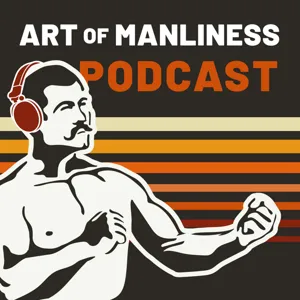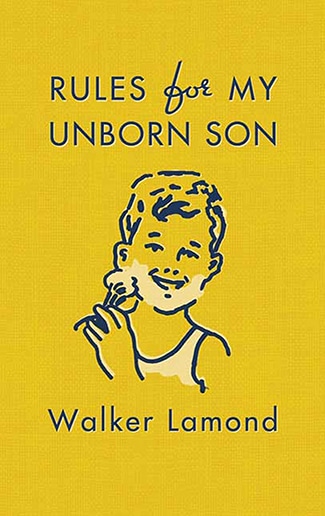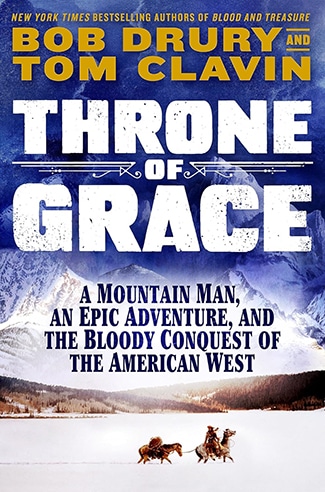Podcast Summary
Bruce Lee's Unique Background and Dedication: Bruce Lee's life story showcases his ambition, reinvention, and relentless dedication, setting him apart in martial arts cinema and influencing American manhood.
Bruce Lee's impact on both American and Asian cultures extends far beyond his groundbreaking role in martial arts cinema. Matthew Pauli's new biography, "Bruce Lee: A Life," reveals how Lee's unique background, fierce determination, and love for martial arts set him apart. From his early years as a child star in Hong Kong to his teenage training and eventual move to America, Lee's story is one of ambition, reinvention, and relentless dedication. His influence on Hollywood and fellow actors like Steve McQueen and James Coburn, as well as his extensive personal library of philosophy and psychology books, showcased his innovative and multifaceted approach to life. The Art of Manliness podcast episode featuring Matthew Pauli explores these aspects of Bruce Lee's life and legacy, demonstrating how he not only changed the way we view martial arts but also our perception of manhood in America. For more information, visit AOM.IS/BruceLee.
Bruce Lee's Complex Heritage and Discrimination: Bruce Lee, born to a wealthy family with diverse heritage, faced discrimination in both Hong Kong and America, fueling his determination to bridge cultural gaps and become a martial arts and cinematic icon.
Bruce Lee's unique background and experiences, shaped by his diverse heritage and the discrimination he faced in both the East and West, contributed to his success in bridging cultures and becoming a martial arts and cinematic icon. Despite his immense impact on cinema and martial arts, there have been few biographies about him due to his Asian American heritage and the perception that Kung Fu was a lowbrow art form. However, Bruce Lee's life was far more complex than previously known. He was born in America to a wealthy family with Chinese, Dutch Jewish, and English ancestry. Growing up, he faced discrimination in both Hong Kong and America, fueling his determination to bridge the divide between the East and West. His acting career began in childhood, and he faced discrimination as an Asian actor in Hollywood. These experiences shaped his worldview and made him a trailblazer in breaking down cultural barriers.
Bruce Lee's early life experiences shaped his fiery personality: Bruce Lee's rebellious childhood and complicated relationship with his father fueled his individualistic spirit, leading to a legendary career as a martial artist and actor.
Bruce Lee's early life experiences, including surviving the cholera epidemic during the Japanese occupation of Hong Kong and his father's opium addiction, shaped his fiery and individualistic personality. Despite growing up in an affluent family, Lee was a rebellious and hyperactive child who loved street fighting. His refusal to accept authority and his distrust of those in power stemmed from his complicated relationship with his father. These experiences influenced Lee's later career as a martial artist and actor, making him a cultural icon and a symbol of individualism.
Bruce Lee's Hong Kong Childhood: A Dangerous Place: Bruce Lee sought out Wing Chun Kung Fu to improve street fighting skills and later became a renowned martial artist and actor
Bruce Lee's upbringing in Hong Kong during the 1950s was vastly different from the modern perception of the city as a high-end shopping destination. Instead, it was a dangerous place filled with gangs, corruption, and chaos. To fit in and protect himself, Lee engaged in street fights and eventually sought out Wing Chun Kung Fu to improve his skills and become the best fighter. At the time, Kung Fu was not a respected art form, and there was little distinction between it and other martial arts like karate or taekwondo. Wing Chun was a specific style of Southern Kung Fu that was small and obscure, with only a few masters in Hong Kong. Lee began studying Wing Chun to surpass a friend and improve his street fighting abilities, eventually leading him to become a renowned martial artist and actor.
Bruce Lee's Personal Circumstances and Desire for Mastery Drove Him to Study Wing Chun: Bruce Lee, seeking to be the best fighter, was drawn to Wing Chun's popularity and its supposed effectiveness for smaller individuals. He initially respected the learning process before later developing his unique style.
Bruce Lee's study of Wing Chun Kung Fu was driven by both personal circumstances and a desire to be the best fighter. Wing Chun gained popularity in Hong Kong due to its students' success in challenge fights, making it an attractive style for a young and rebellious Bruce Lee. Additionally, the style's origins as supposedly founded by a female Shaolin nun, who made it more effective for women, appealed to Lee, who grew up smaller than his siblings. Keeping his training a secret from his disapproving parents added to his determination. Despite his disrespectful attitude towards tradition and his eagerness to surpass his instructors, Lee initially respected the learning process and absorbed the basics of Wing Chun before later incorporating other martial arts elements into his unique style.
Bruce Lee's experiences in Hong Kong and America shaped his character and ambition: Bruce Lee's struggles in Hong Kong and America, including street fights, expulsion, and working in a restaurant, fueled his determination to succeed and become a martial artist and actor. His background as a dancer helped him share his skills and earn a living.
Bruce Lee's experiences in Hong Kong, including the street fights and being sent to work in a restaurant in America, played a significant role in shaping his character and driving his ambition. The culture of challenge and honor in Hong Kong made him a better fighter, but it also led to his expulsion from the city. In America, the harsh reality of working in a restaurant and the fear of being trapped in menial labor motivated him to focus on his goals and eventually become a successful martial artist and actor. Additionally, his background as a dancer helped him find a way to share his martial arts skills with others and start earning a living. These experiences are emblematic of the immigrant journey, with its challenges and opportunities for growth.
Bruce Lee: Trailblazing Martial Artist and Entrepreneur: Bruce Lee was a pioneering martial artist who broke racial barriers, an effective teacher, and a formidable fighter. He learned from various styles and environments, refined his techniques, and set himself apart with an open-minded approach.
Bruce Lee was not only a pioneering martial artist who broke racial barriers by teaching Kung Fu to African-American students, but also a quick learner and innovator who incorporated various fighting styles into his own practice. At a young age, Lee had an entrepreneurial spirit and a dream to franchise Kung Fu schools across the country. His ability to learn and adapt to different environments and students' skills made him an effective teacher and a formidable martial artist. Lee's informal Kung Fu school at Edison Technical High School served as an incubator for him to refine his techniques and learn from others, including boxers and wrestlers. His open-minded approach to martial arts and willingness to adapt set him apart as a trailblazer in the world of martial arts.
Bruce Lee's unwavering ambition and self-confidence: Bruce Lee's determination to be the best martial artist and Hollywood star, despite racial barriers, showcases the power of self-belief and ambition.
Bruce Lee's unwavering ambition and self-confidence played a significant role in his success. From his early years in Hong Kong, where he aimed to be the best martial artist in the world, to his dreams of becoming a Hollywood movie star despite racial barriers, Bruce's determination was evident. He also had a knack for attracting people to him, whether it was through his charisma or his martial arts skills. This was exemplified in his relationship with his wife, Linda, who became a disciple before they started dating and believed in him wholeheartedly, providing him with the support he needed to overcome challenges. Overall, Bruce Lee's story is one of ambition, self-confidence, and the power of belief in oneself and one's dreams.
Linda's unwavering support for Bruce: Linda's belief and support helped Bruce overcome societal obstacles and paved way for his Hollywood career.
Linda Lee's defiance of her family's disapproval and her unwavering support for her husband, Bruce Lee, played a crucial role in his success. Despite interracial marriage being illegal and socially unacceptable in the 1960s, Linda stood by Bruce, who was trying to establish himself as a kung fu teacher in a culture where Chinese traditions were largely unknown. Her determination and belief in him helped him overcome the challenges and eventually paved the way for his acting career in Hollywood, where opportunities for Asians were limited. This story serves as a reminder of the power of love, support, and determination in overcoming societal obstacles.
Bruce Lee's early acting career and breakthrough role: Bruce Lee's initial disappointment led him to a groundbreaking role as a sidekick, showcasing Asian martial arts to Americans, and ultimately gaining popularity and a loyal fanbase.
Bruce Lee's journey to fame began with his love for performing as an actor and demonstrating Kung Fu. His charisma and skills led him to be discovered by a TV producer, William Dozier, who offered him a groundbreaking role in an American TV show as Charlie Chan's lead. However, when this opportunity didn't materialize, Dozier proposed another show, "The Green Hornet," where Bruce played the sidekick, Cato. Initially disappointed, Bruce saw it as an opportunity to showcase Asian martial arts to the American audience, which had never been seen before on TV. He quickly gained popularity, surpassing the main character's, and garnered a loyal fanbase within the small martial arts community. Despite the initial setback, Bruce's determination and unique abilities in both acting and martial arts paved the way for his unforgettable impact on Hollywood.
Bruce Lee's Unconventional Training Routine: Bruce Lee revolutionized martial arts training by incorporating weightlifting, running, and jumping rope for enhanced speed and strength, challenging stereotypes and setting a new standard for physical fitness.
Bruce Lee's innovative approach to martial arts training included a focus on physical fitness, which was uncommon during the 1960s. He was an early adopter of weightlifting, running, and jumping rope to enhance his speed and strength. Despite the NFL's opposition to weightlifting for athletes, Lee recognized the importance of being in top shape to excel in martial arts. He also aimed to challenge stereotypes of Chinese males as weaklings by getting shredded and ripped, which conveyed power and masculinity on screen. Additionally, Lee was a voracious reader, studying philosophy, psychology, and self-help books, reflecting his intellectual curiosity and dedication to self-improvement.
Bruce Lee's Philosophical Approach to Martial Arts: Bruce Lee believed in a pragmatic approach to martial arts, emphasizing effectiveness over tradition and formalization.
Bruce Lee was an extraordinary martial artist and philosopher who combined Eastern and Western knowledge to create his unique martial art style, Jeet Kune Do. He read extensively on various philosophers, martial arts, and combat sports, which influenced his thinking and martial arts practice. Initially, he aimed to create the ultimate martial arts style by combining elements from different martial arts, but later philosophically believed that no style should be formalized and encouraged finding one's best style. Lee's approach was pragmatic, emphasizing the effectiveness of techniques in a fight rather than adhering to traditional martial arts lineages. This approach resonated with the spirit of mixed martial arts and influenced his career as he taught and trained celebrities like Steve McQueen, James Coburn, and Kareem Abdul-Jabbar, fueling his desire to become a movie star.
Learning from celebrities in LA: Teaching Kung Fu to celebrities in LA helped Bruce Lee learn essential skills for success in Hollywood and led to his worldwide fame with 'The Big Boss'.
Bruce Lee's experience of teaching Kung Fu to celebrities in Los Angeles was pivotal in his journey to stardom. Facing financial struggles after the cancellation of "The Green Hornet," Lee turned to teaching private lessons to celebrities like Steve McQueen and James Coburn. These lessons not only provided him with much-needed income but also offered valuable insights into the entertainment industry and how to become a star. Lee learned essential skills like how to dress, conduct himself, and interact with directors. Despite his success in America, Lee's career took a turn when he returned to Hong Kong to make a low-budget Kung Fu movie, "The Big Boss," out of financial necessity. Surprisingly, the film became a massive box office success, catapulting Lee to worldwide fame. This unexpected turn of events highlights the importance of perseverance, adaptability, and the power of seizing opportunities.
Bruce Lee's Hong Kong films revolutionized both Hong Kong and American film industries: Bruce Lee's Hong Kong films introduced Western audiences to Chinese cinema, paved way for martial arts movies' popularity in America, led to emergence of new genre and Asian talent, and popularized Asian martial arts in America, resulting in establishment of dojos across the country.
Bruce Lee's Hong Kong films, which gained significant popularity outside of Southeast Asia posthumously, transformed both the Hong Kong and American film industries. These movies, released in 1973, introduced Western audiences to Chinese cinema and paved the way for the popularity of martial arts movies in America. Bruce's magnetic presence and undeniable talent, combined with the novelty of Hong Kong cinema, made these films groundbreaking. The introduction of Asian talent, such as Jackie Chan and Chuck Norris, and the emergence of a new genre in the West, led to a significant change in action cinema. Furthermore, Bruce Lee's movies popularized Asian martial arts in America, leading to the establishment of dojos in various towns across the country.
Transforming American society with Asian culture through film: Bruce Lee's determination and refusal to quit inspired the author and proved that the impossible can be achieved with perseverance, making a lasting impact on both entertainment and culture.
Bruce Lee was not just a Kung Fu movie star, but a cultural icon who transformed American society and popularized martial arts. His self-conscious goal was to spread Asian culture to the West through film. Despite facing numerous challenges and setbacks, his determination and refusal to quit served as an inspiration for the author during the writing process. The seven-year journey to complete the biography reinforced the idea that the impossible can be achieved with perseverance. Bruce Lee's impact on the world extends beyond entertainment and continues to inspire generations.
Bruce Lee's Life and Legacy: Bruce Lee's dedication to mastering martial arts, philosophy, and acting through self-discipline made him a cultural icon, leaving a lasting impact on the world. Learn more in Matthew's book or visit aom.is/BruceLee.
Bruce Lee's life serves as an inspiring example of this, as he dedicated himself to mastering various martial arts, philosophy, and acting. Lee's relentless pursuit of knowledge and self-discipline led him to become a cultural icon and leave a lasting impact on the world. To learn more about Bruce Lee's life and philosophy, check out Matthew's book, available on Amazon.com and in bookstores. For additional resources, visit aom.is/BruceLee. Remember, you can stay updated with The Art of Manliness by visiting www.artofmanliness.com, and don't forget to leave a review on iTunes or Stitcher if you enjoy the show. Keep growing and stay manly!














